CALLING UNDERGRADUATES!
Kickstart your journey in nanomaterials—join our team and make your mark in the research community!
More info
As part of the ERDF project, a new Bruker DEKTAK PRO stylus profilometer and a new quartz crystal microbalance with dissipation monitoring (QCM-D) QSense Explorer, were acquired for our department. These two instruments will significantly expand the research capabilities of our students within the scope of their qualification theses.
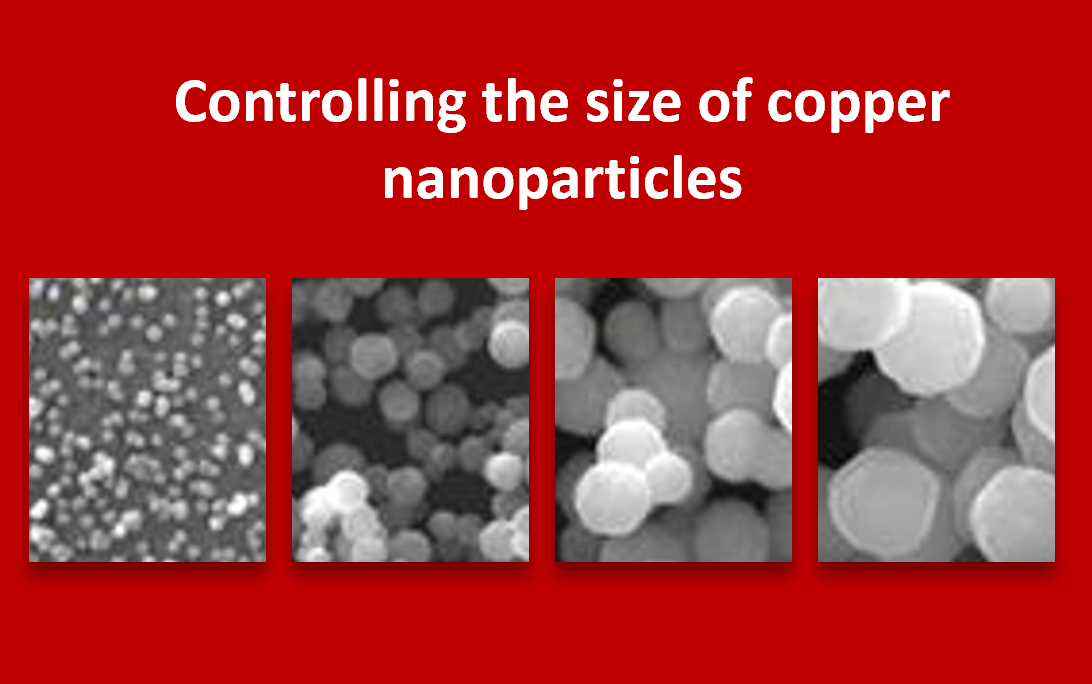
The ability to control the size of nanoparticles produced by gas aggregation sources represents one of the crucial steps for the wider application of this method of nanoparticle preparation. In a recently published article, we presented a simple way to control the size of the prepared nanoparticles, which is based on an additional RF plasma in the aggregation chamber.

In the study of resistive switching in Ag/PEG nanoliquids, we succeeded in identifying three different resistive states reconfigurable by an external electric field and presented the first equivalent electrical circuit characterizing such a system. These results, which are important for neuromorphic engineering, are summarized in an article published in a prestigious journal Advanced Science.

The newly published article, Silver-Based Self-Organized Resistive Switching Nanoparticle Networks with Neural-Like Spiking Behavior: Implications for Neuromorphic Computing, which resulted from a broad international collaboration, attempts to answer the question of how the composition and morphology of silver-based nanoparticle networks influence the dynamics of their resistive switching for neuromorphic engineering.
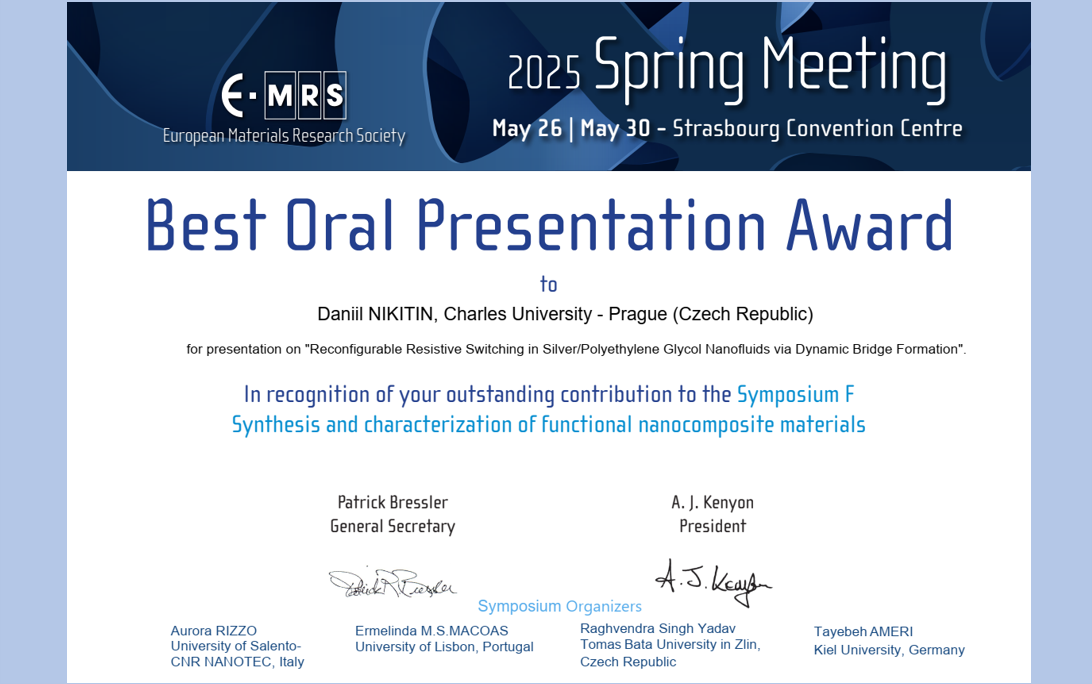
At the international conference E-MRS Spring Meeting, held in May 2025 in Strasbourg, France, dr. Daniil Nikitin from our department received the award for the best oral presentation. The presentation was devoted to the resistive switching phenomena in nanofluids.
We congratulate Daniil on this!!
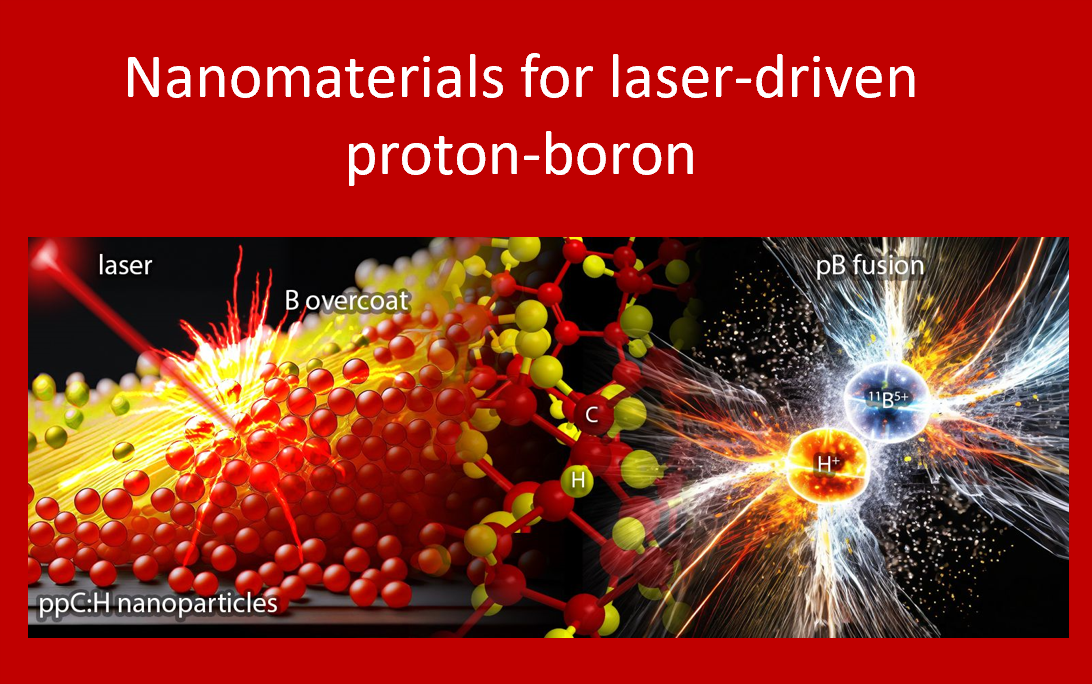
The latest research in the group of prof. Shukurov has been accepted in Materials Today Sustainability. It explores the potential use of hybrid nanomaterials made of plasma polymerized nanoparticles and sputtered boron layers for laser-driven proton-boron (pB) fusion, i.e., neutron-free, waste-free, and sustainable power source. We thank collaborators from ELI Beamlines Facility, Centre for Light Matter Interaction at Queen's University Belfast, University of Jyväskylä, Helmholtz-Zentrum Dresden-Rossendorf, and J.E. Purkyně University.
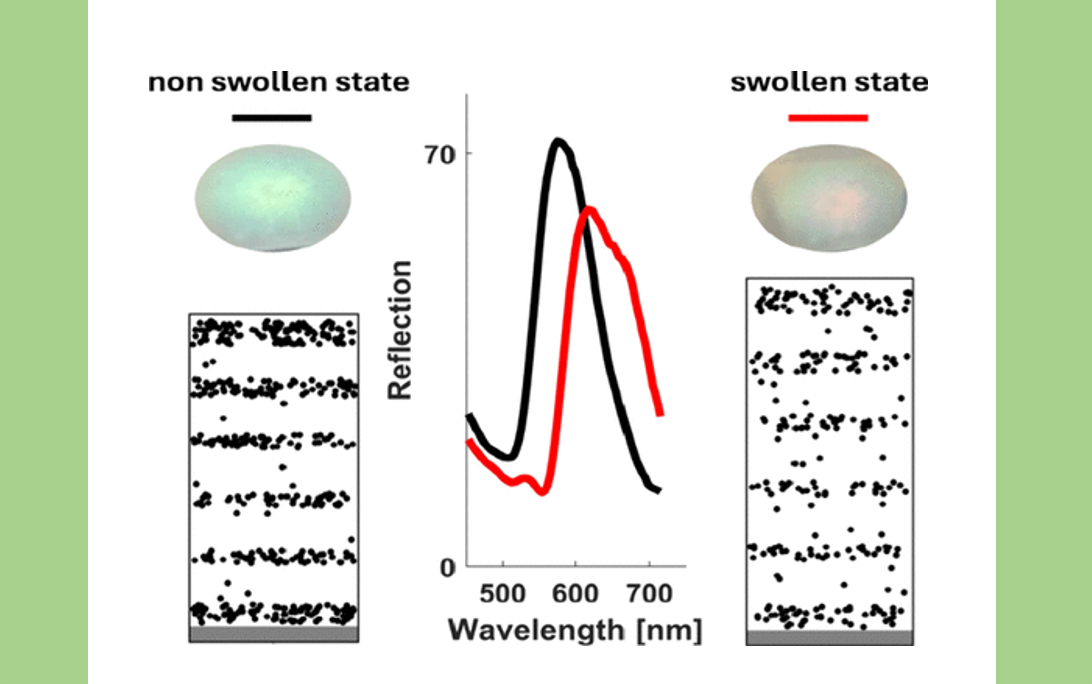
Reflectors based on multilayer nanocomposites of plasmonic nanoparticles and plasma polymers can be used as sensors for detecting polar solvent vapors. The technique used to prepare the polymer component allows for the use of swelling and shrinkage of the entire sensor structure. Optical characterization of the sensor allowed for monitoring changes in its structure during repeated cycles of exposure to vapors.
We published the study in ACS Applied Materials & Interfaces.
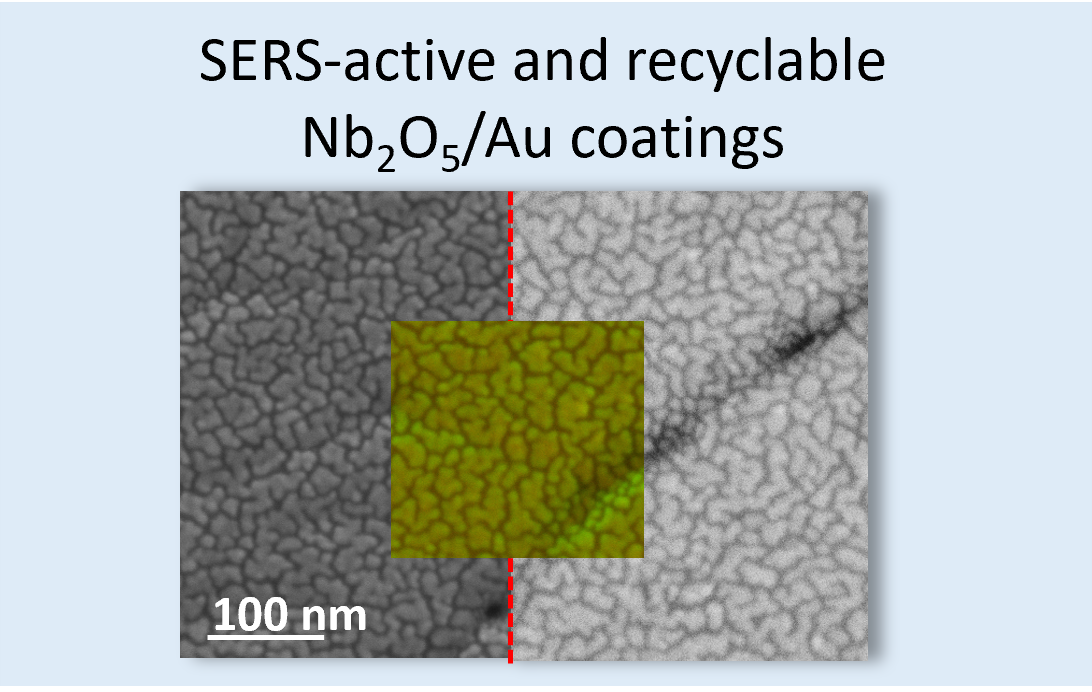
Within the framework of the GAČR project GAČR 22-16667S, which was carried out in cooperation with the Institute of Physics, Faculty of Physics, Charles University, we managed to complete another study successfully focused on surfaces based on Nb2O5 decorated with gold nanostructures that are at the same time SERS-active and recyclable using UV radiation.
The results of this study are summarized in an article published in the journal Material Letters.
.
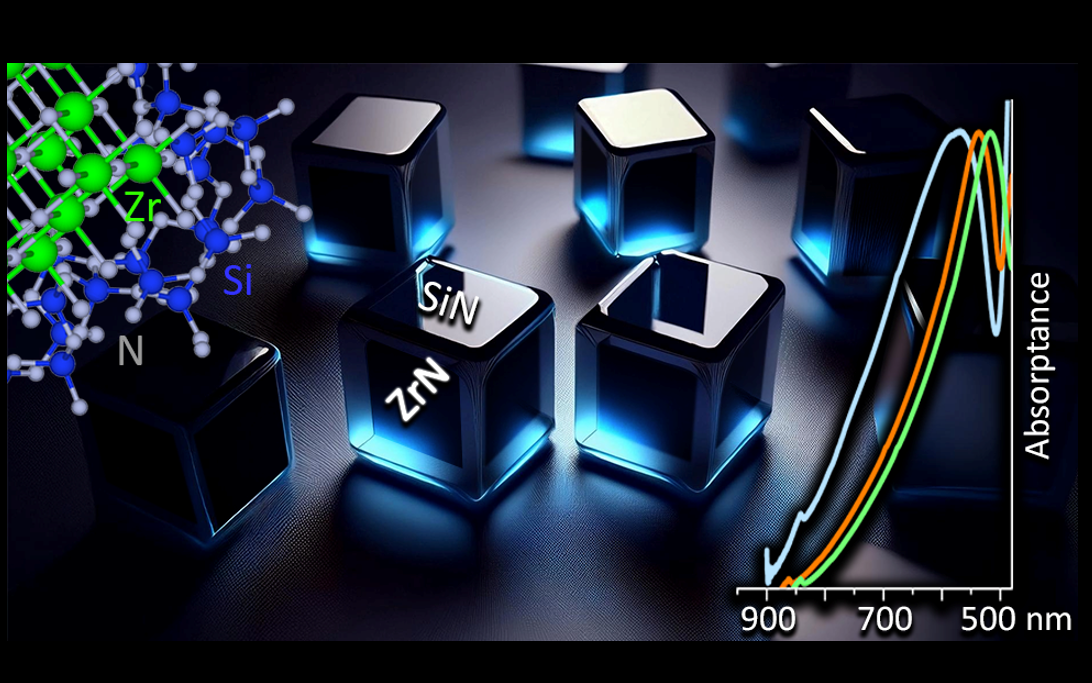
Huge congrats to our PhD student Mariia Protsak from the group of Prof. Shukurov on their new publication in ACS Applied Nano Materials! This exciting research, a collaboration with Montreal Polytechnique, dives deep into the optical properties of core@shell ZrN@SiN nanoparticles prepared by reactive sputter-based aggregation. The key finding is as follows: LSPR effect can be controlled by adjusting the porosity, and thus, the effective refractive index of the SiN shell, even at temperatures above 400°C.
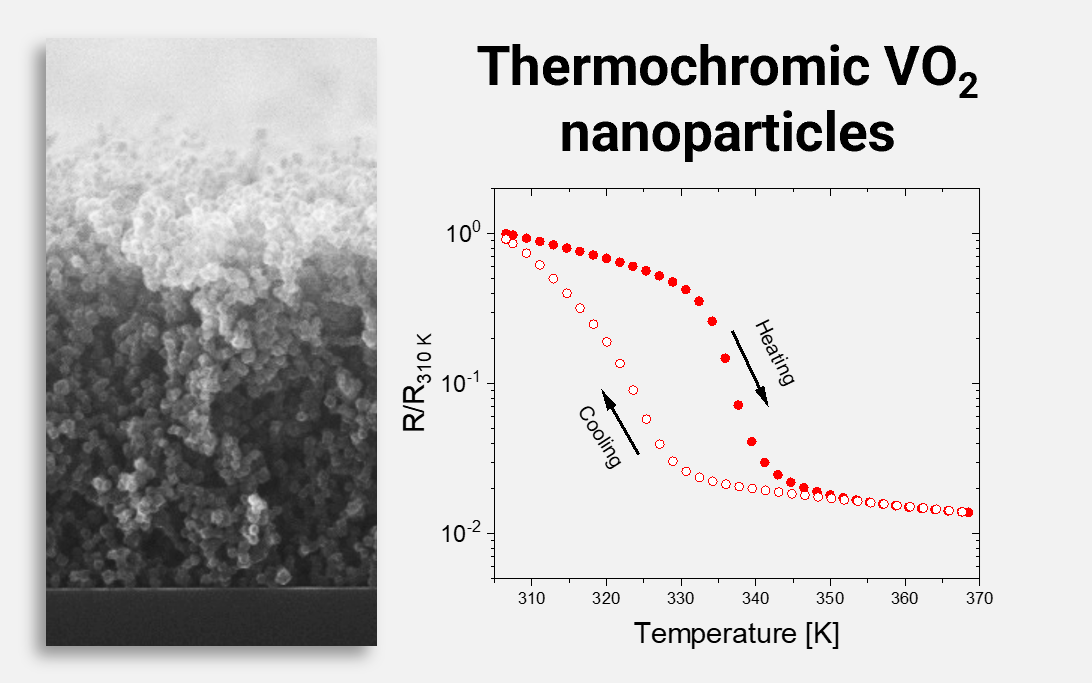
At our department, we have developed a novel and original method enabling the preparation of nanoparticle-based thermochromic films, i.e. films whose electrical and optical properties change reversibly with temperature.
The results of our study were published in the journal Scientific Reports in the article "Novel technique to produce porous thermochromic VO2 nanoparticle films using gas aggregation source".
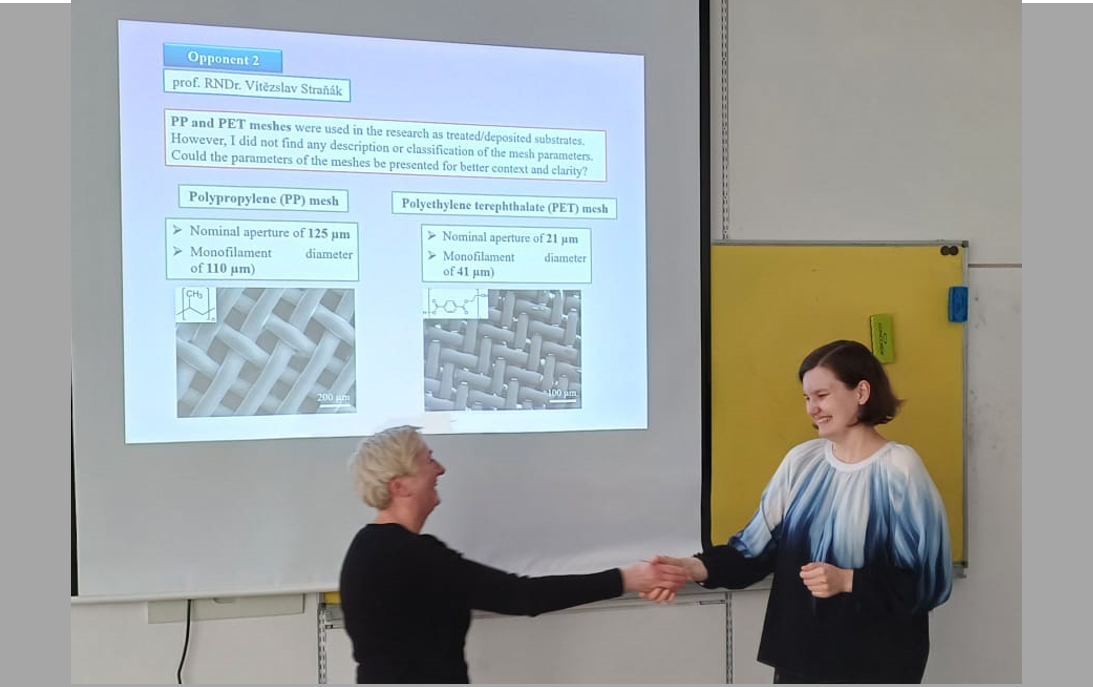
On February 20, 2025, Natalie Khomiakova from our department successfully defended her dissertation focused on modifying textiles using non-equilibrium plasma-based techniques.
We congratulate Natalia and wish her much success in her future scientific career and private life!
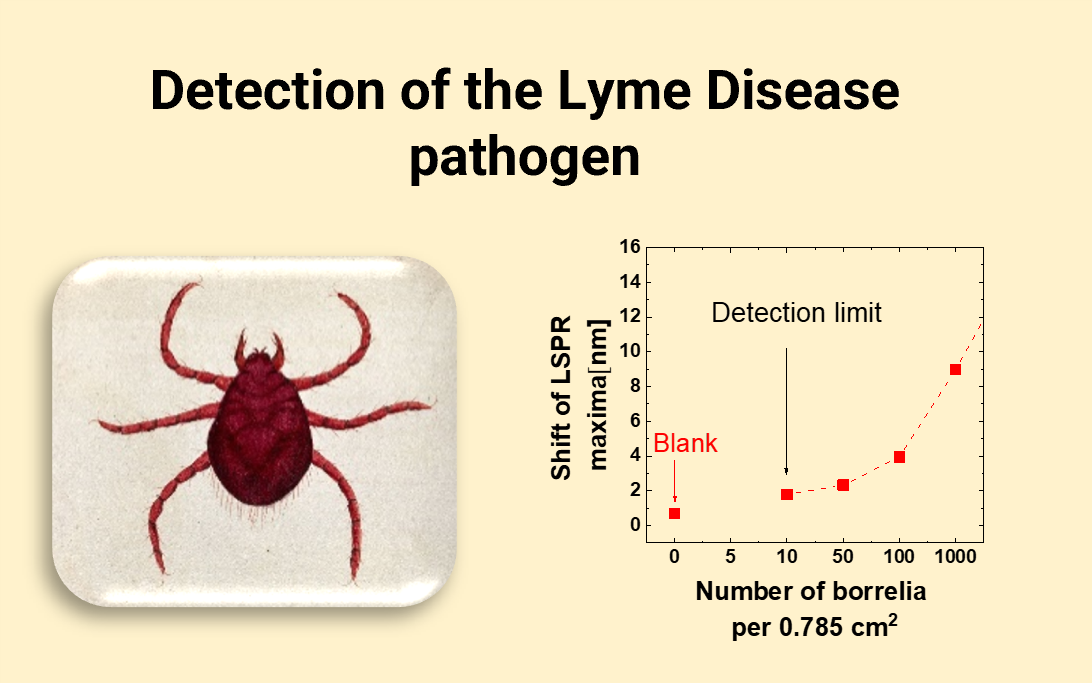
Borrelia afzelii, a pathogenic bacterium, causes Lyme disease in humans, which can be debilitating if not diagnosed early. Doc. O. Kylián and dr. A. Kuzminova participated in the development of a new technique allowing for the sensitive detection of this pathogen. The results of this joint study with JČU are summarized in an article „Tailored functionalization of plasmonic AgNPs/C:H:N:O nanocomposite for sensitive and selective detection“ published in Journal of Biophotonics.
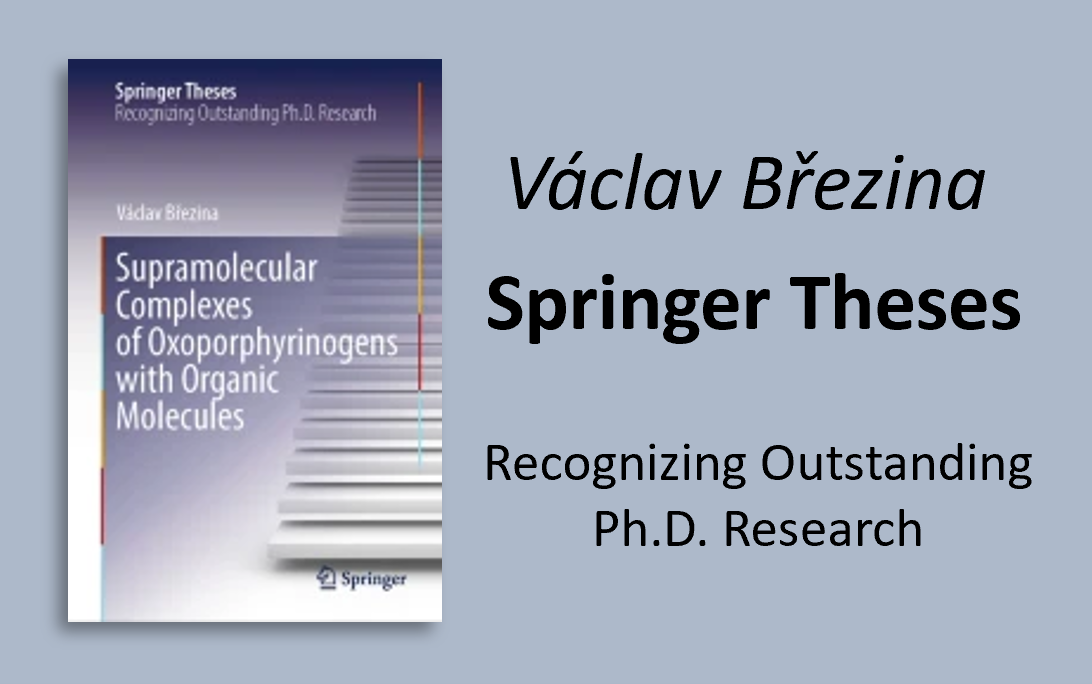
Springer-Nature publishing house published a dissertation of dr. Václav Březina entitled „Supramolecular Complexes of Oxoporphyrinogens with Organic Molecules“ in its prestigious Springer Theses edition at the end of 2024.
We heartily congratulate Václav on this success!
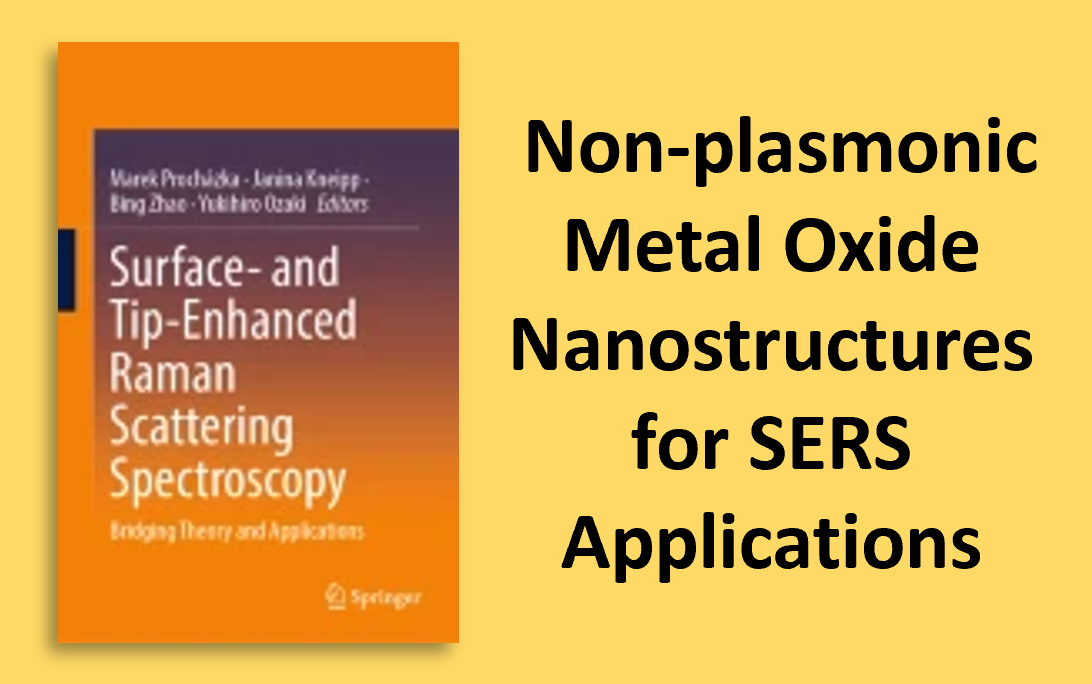
Is it possible to use non-plasmonic oxides as a platform for efficient SERS detection?
This question is attempted to be answered in the chapter “Non-plasmonic Metal Oxide Nanostructures for SERS Applications” published in the book Surface- and Tip-Enhanced Raman Scattering Spectroscopy, which was prepared by doc. O. Kylián.
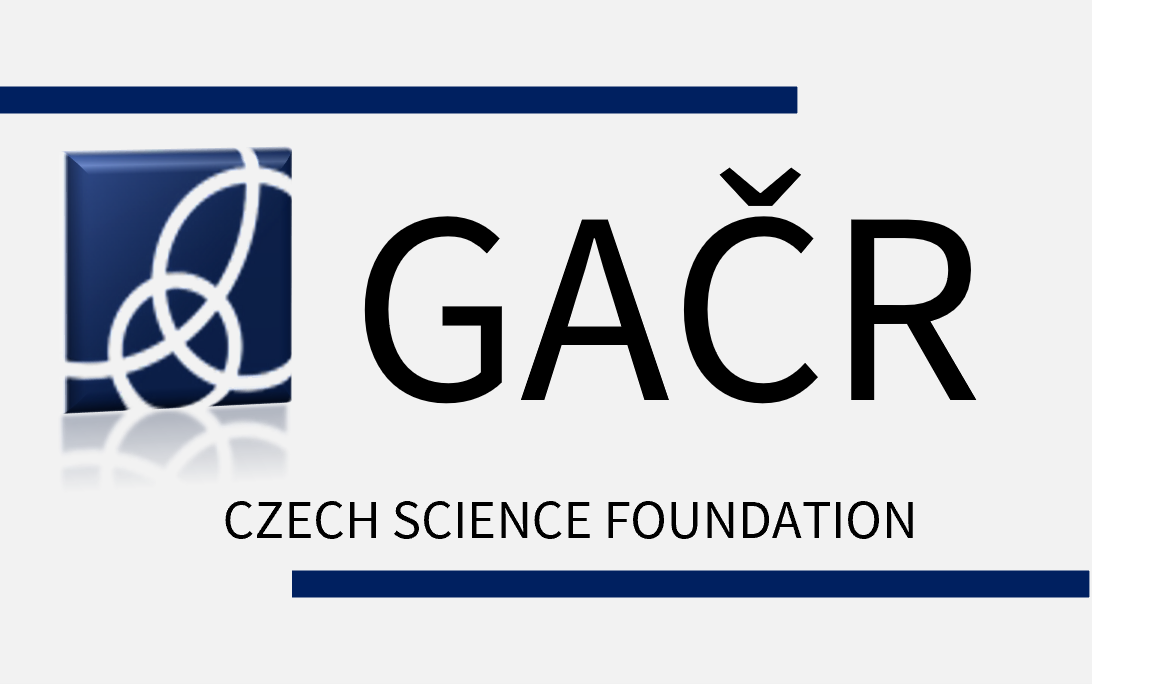
From 2025, members of our department will participate in 3 new GAČR projects:
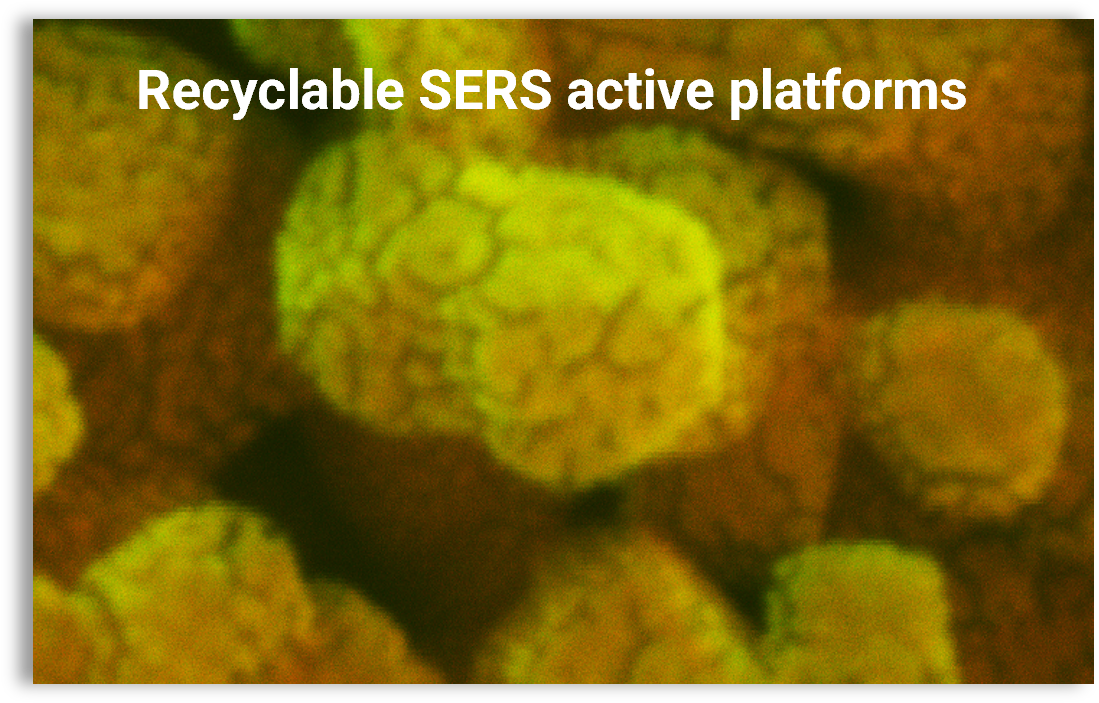
In the frame of a research grant GAČR 22-16667S and in cooperation with colleagues from the Institute of Physics of the MFF UK, we demonstrated the possibility of preparing highly SERS active platforms combining metal and metal oxide, which can be effectively recycled using UV radiation. The results of our study have just been published in the journal Surface and Coatings Technology.

Despite tremendous progress of magnetron-based gas aggregation sources of nanoparticles, several issues still limit their broader use on an industrial level. Often overlooked is the control of the movement of NPs from inside a gas aggregation source towards the substrate. This issue is addressed in our just-published study in the journal Vacuum.
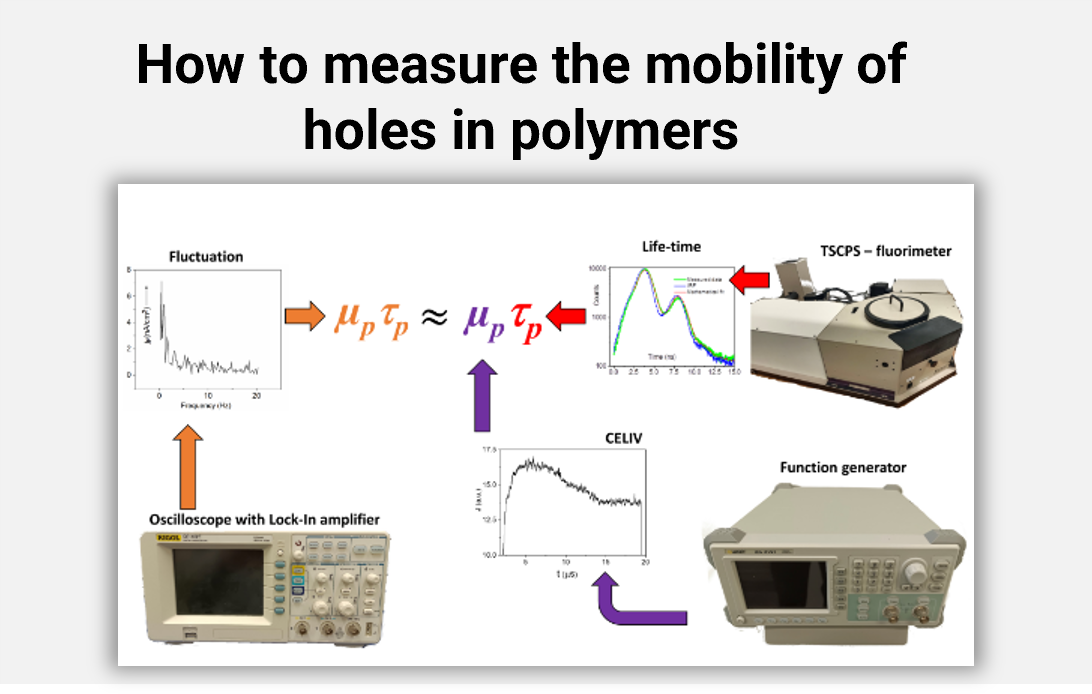
In a recently published study in the journal Synthetic Metals, we demonstrated that the direct current flowing through the MEH-PPV sample is modulated by low-frequency fluctuations. The mean value of the amplitude of these fluctuations increases linearly with the inverse of the frequency and has a slope that allows determining the product of the mobility and lifetime of the current carriers. As it was shown, with the known lifetime of the carriers, it is possible to determine their mobility in this way.
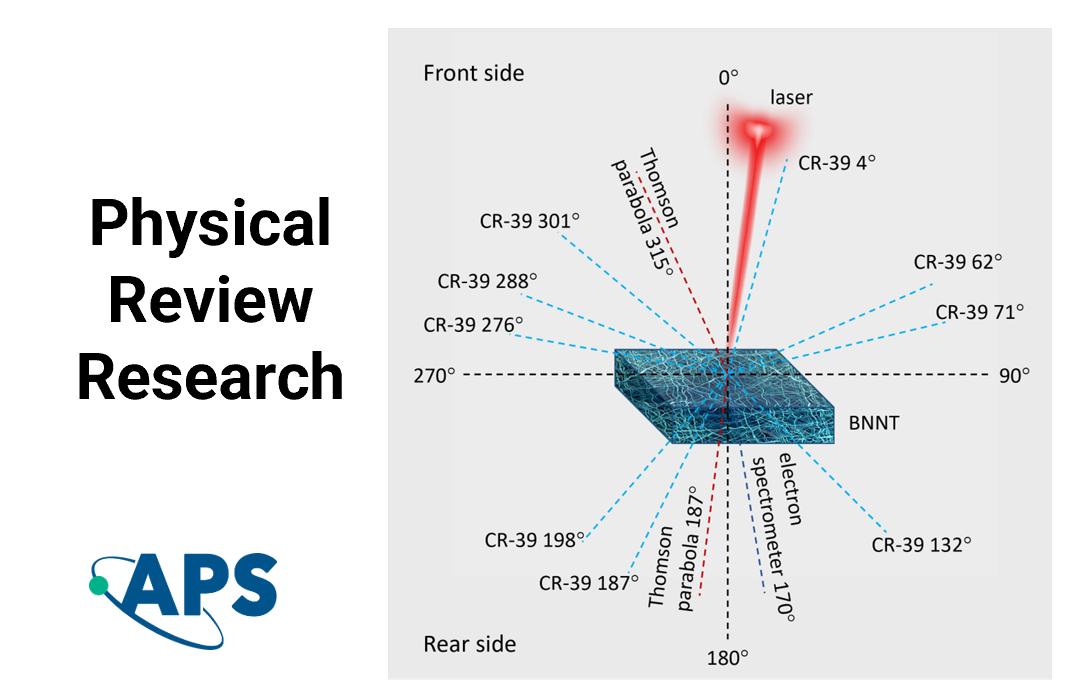
The group of prof. Shukurov participated in research on enhanced laser absorption and ion acceleration by boron nitride nanotube (BNNT) targets and high-energy PW laser pulses. We used a PW laser system operating at a pulse duration of 1.2 ps and an energy of 1.3 kJ to generate energetic ion streams from BNNT target. We detected a 1.5-fold increase in proton maximum energy and a 2.5-fold increase in the maximum energy of heavy ions (C and N) when comparing the BNNT to flat polystyrene. Moreover, the high-energy ion flux was orders of magnitude higher for the BNNT after cutting off low-energy ions with Al filters. The results were published in Physical Review Research.
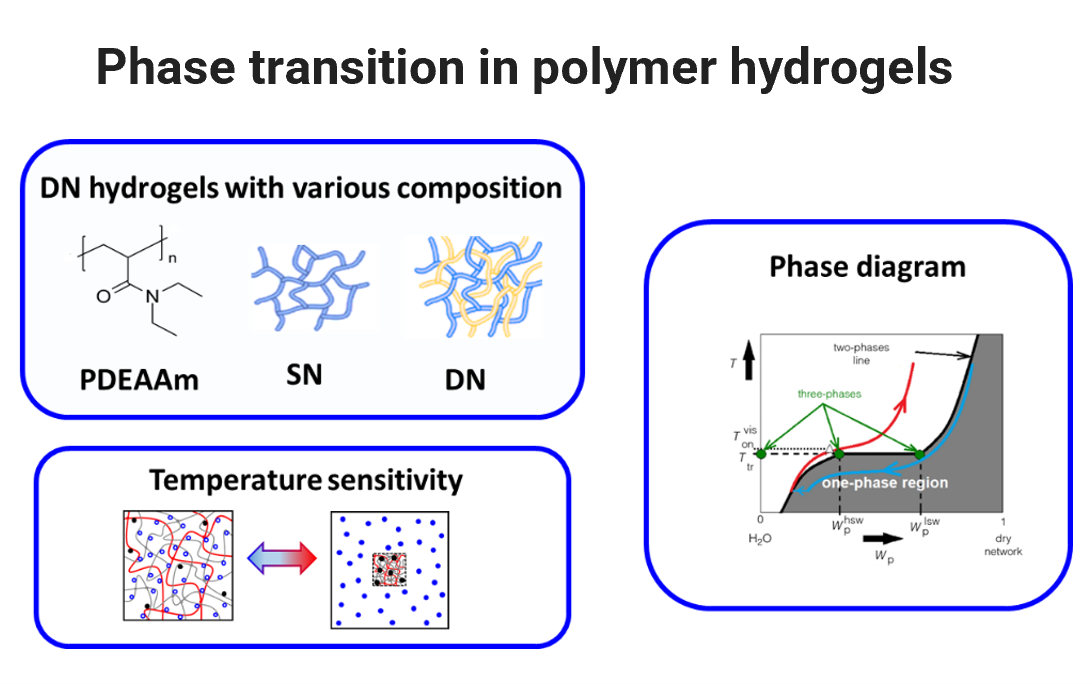
Our new study investigates the responsive behavior of hydrogels containing a double polymer network using gravimetry, differential scanning calorimetry (DSC), FTIR and NMR spectroscopy. Changes in hydration and mobility of polymer units during temperature-induced phase transition in hydrogels are studied in more detail. The results of the study are significant for the use of the investigated hydrogels in biomaterials and intelligent systems for the controlled release of drugs.
More details can be found in the just published article in Journal of Thermal Analysis and Calorimetry.